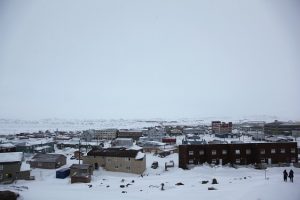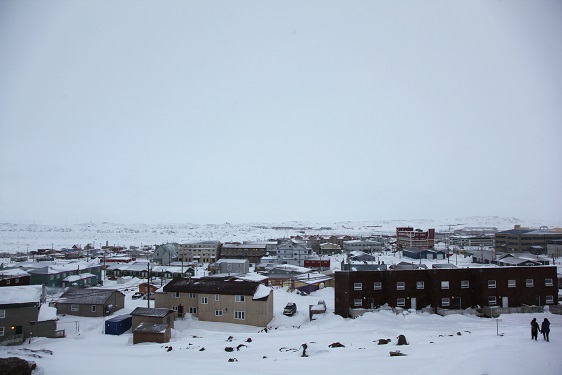Two Concordia University engineering students were featured in a CBC News article earlier this month for helping to solve housing problems in Canada’s North.

Daniel Baril, from Quebec’s northern community of Kuujjuaq and Ahmad Kayello, from Saudi Arabia are both second year Master’s students studying building, civil and environmental engineering.
They are working on their thesis project entitled “Field Study of Hygrothermal Performance of Housing in the Canadian North” which consists of monitoring the hygrothermal performance of existing social housing in Nunavik, with a focus on developing new sustainable housing options.
“There is a housing shortage up north, and lots of overcrowding,” said Baril in a feature on Concordia’s website. “There are multiple families living under the same roof […] it’s a high cost of building so it’s a tough place to try and catch up with the housing needs.”
Working under the supervision of Paul Fazio, a professor of building engineering and member of Concordia’s Centre for Zero Energy Building Studies, Baril and Kayello are conducting tests in Concordia’s Environmental Chamber and on site in the North.
“Ahmad and Daniel are going beyond the requirements for their Master’s degree; their passion is to improve the living conditions of the people in the North,” said Fazio.
Over the last month, they have built a test hut in the Environmental Chamber which has been subjected to temperatures of up to -40 C, to simulate real-life conditions.
“It’s basically a big refrigerator, it goes down to -40 C and we have a test hut built in there and we can do different experiments,” Baril told the CBC.
The students told the CBC’s Daybreak they hope their prototypes will offer a practical solution for the North’s unique needs. Due to the short building season, the team has innovated houses that fit together like Lego pieces. With local aid, homes are typically erected on site in only six days.
The walls are made from prefabricated sandwich boards: two layers of wood with Styrofoam inside. It is important that humidity not pass through them because water vapor can condense, freeze, thaw and eventually cause hazardous mold growth.
According to Baril, due to rising fuel costs and an increase in housing needs for remote communities — where many of Canada’s natural resources lie — there has never been a greater need for innovative building designs.
Baril and Kayello have been focusing on the issue of fine powder snow, also referred to as icing sugar snow, which can enter through small cracks in the house’s infrastructure, and subsequently cause structural damage.
In order to prevent leaks, the two students came up with the idea of sealing off the attics, which raised other concerns.
“We’re trying to see if we can completely seal these attics […] and then there’s also a chance of moisture problems because of the moist air getting in and not being able to escape. So there are drawbacks to both venting and unventing,” Kayello told the CBC.
Since much research has already been done regarding housing in hotter climates, the students have ample opportunity to research housing improvements in colder climates. The hope is that their work will benefit the communities of the Arctic for the long term.




